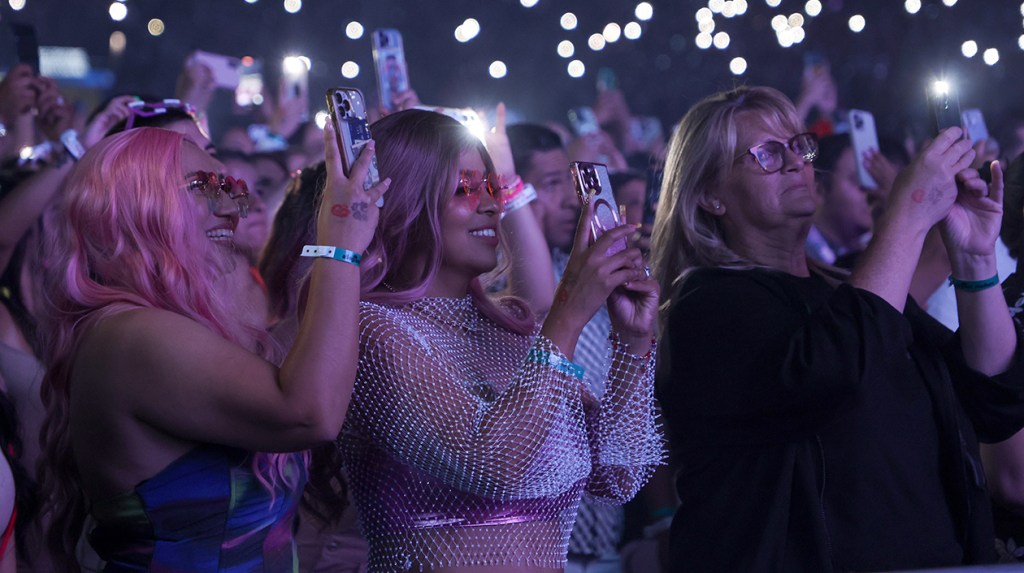When artists announce a new tour, ticket sales tend to exhibit a pattern: An initial surge of fan enthusiasm followed by a gradual decline in interest.
So, Tim Collins, who manages the Swedish artist Benjamin Ingrosso, was surprised to see demand for tickets to see his client increase throughout his summer tour. “At the beginning of the tour, we hadn’t sold out,” Collins says. “With every show we did, interest in him became bigger. And it was mainly because of how TikTok talked about him throughout the tour.”
TikTok marketing has been a central part of promoting music for more than three years at this point, almost entirely reshaping record labels’ strategy. When the platform started to regularly mint hit singles in 2020, however, the concert business was mostly shut down due to the coronavirus pandemic and shows didn’t get the same sort of attention.
This year, though, TikTok has become the new frontier for marketing tours. “Traditional promoters are starting to really wake up to it,” says Sanu Hariharan, co-head of music partnerships at Creed Media, a marketing company focused on Gen Z.
“It’s opened up a new revenue model for me,” adds Johnny Cloherty, co-founder of the digital marketing company Songfluencer. “A lot of the heavier touring acts are interested in, ‘I’ll pay a handful of creators to come to my VIP section to film content with me backstage to help sell tickets.’ We can get influencers to talk about the merch and do promotion that way.”
What took so long? “In general, live music lags behind the rest of marketing,” according to William Van Orsdel, chief growth officer of the live promotions company Breakaway. “Larger companies out there can’t change the way they’ve been doing things because they’ve always been doing them that way” — relying on tried-and-true techniques like print advertisements, billboards and posters.
Sure enough, Cloherty says when he pitched live music companies on using modern TikTok marketing techniques in 2019 and 2020, he “got laughed out of the room.” “People were like, ‘No way are you going to do this,’” he recalls. But, Van Orsdel continues, “you can’t market in just one silo and expect to be successful.”
The saturation of the post-COVID touring market has also spurred artist managers and event promotion companies to try new concert-marketing techniques. Prices are high; competition for fans is fierce. “The interest in seeing shows is bigger than ever before,” Collins says. “But at the same time, the financial situation is worse than ever before in regards to what you actually can afford to go to. To win a fan, you really have to stand out.”
On top of that, labels have started to see that a tour with buzz leads to streaming gains for the artist on the road, which ultimately helps the record company’s bottom line. Labels don’t participate in artists’ touring income — unless the artist has signed a “360 deal” — which often disincentivizes them from investing in their acts’ live business. “What they’ve realized is that there’s a correlation between having a tour or a set of shows that are relevant and streaming,” Hariharan says.
“Touring goes hand in hand with cultural significance,” adds Andy Serrao, president of Fearless Records. “The moments that are created on touring or in festivals, those don’t just happen and go away. We don’t participate in our artists’ touring revenue, but what we can do to drive the rest of our marketing going into releasing new music is huge.”
Those “moments” from a show depend a lot on the charisma of the artist on stage, of course. “If people are seeing you live and not filming you, that’s a bad sign,” Serrao says.
But marketers can work to make sure that anything exciting that happens is talked about by as many people as possible. “Having influencers at the show is the most important piece of it, because they are really essentially megaphones for the tour,” says Laura Spinelli, digital marketing manager at Shopkeeper Management. “Within the past year, this has become something that we’ve devoted a more significant budget to” for artists like Miranda Lambert and Tenille Townes.
Creed Media recently ran a two-week campaign in Europe for the group Chase Atlantic, using influencers to “create and convey a sense of hype and FOMO around the experience of going to their show,” Hariharan explains. “We wanted to do this early in the tour so that we’re getting consistent relevance and engagement as the tour progresses.” The most successful post — about a guy who takes his girlfriend to see Chase Atlantic — earned nearly 3 million views.
Demand for this sort of marketing is on the rise. “It feels very similar right now to a few years ago when we were trying to convince our label partners to really see the value in influencer marketing for their releases,” Hariharan. “Talking about what we can do for live and touring is a fresh new thing.”
“I’ve gone to a lot of country labels and management companies with this,” Cloherty adds. “Entering 2023 marketing anything without an influencer plan doesn’t seem like it’s very holistic, and that’s especially true if you’re trying to get a younger audience.”
Source link










